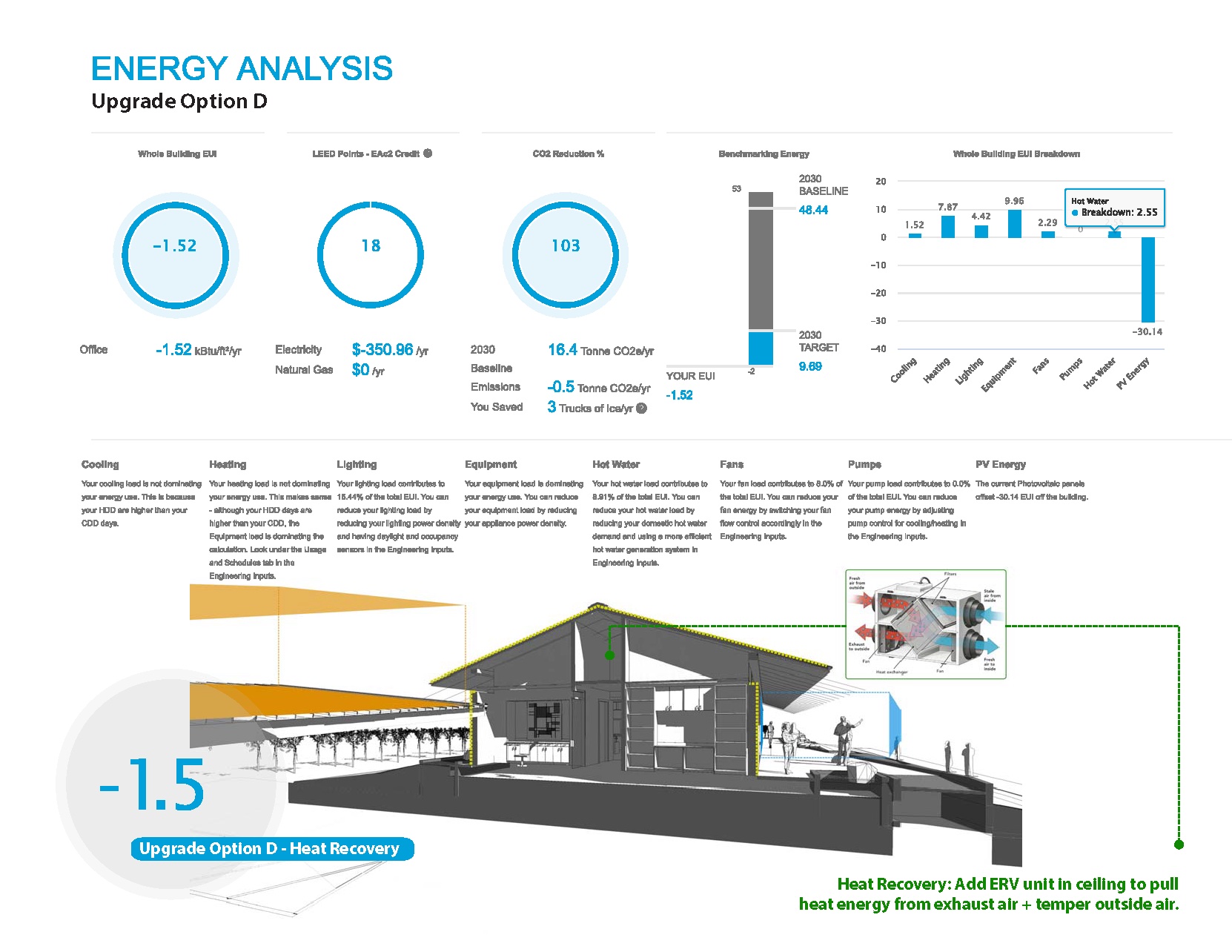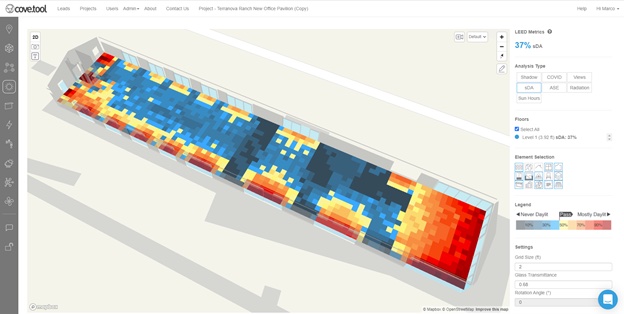For its new office, a farm in California considers four sustainable design options, driven by data
Terranova Ranch in Fresno, Calif., grows more than 25 different crops on 6,000 acres. The corporation, which commenced in 1981, has concentrated its focus recently on techniques that maintain its soil, drinking water, and air excellent as healthier and sustainable as doable.
The design for Terranova Ranch’s new place of work pavilion is the 1st web-zero carbon and internet constructive electricity challenge by Paul Halajian Architects (PHA), and the client’s layout possibilities were educated by the use of cove.tool’s web-centered developing general performance application.
Terranova Ranch’s aimed for a 100 % reduction in operational carbon emissions, and the architect provided many solutions toward assembly or exceeding that objective. (Cove.device shared some of the aspects of this situation analyze with BD+C.)
Likely Further than CODE MINIMUMS
At first, the electricity design for the 5,800-sf business constructing was intended to comply with code minimum amount baseline assumptions from California’s Title 24, version 2019, which provided a carbon reduction of 12 per cent. PHA’s job architect conducted many analyses on probable advancements to decrease the all round Power Use Intensity (EUI), which in this design was 42.52 kBtu/sf/yr.
These analyses calculated the impacts of the building’s HVAC, lighting, devices, hot h2o, fans, and pumps. The to start with proposed style and design adjust was an envelope upgrade, from the obligatory minimal of R-19 to R-30 by introducing two inches of Expanded Polystyrene (EPS) foam board to the exterior walls and 3 inches of foam board insulation to the roof, which enhanced its R-worth from 30 to 41. These variations would improve the building’s total carbon reduction in base layout to 20 percent and reduce the EUI to 38.
GLAZING’S Advantages Didn’t PENCIL
The next option the architect investigated for Terranova Ranch put together the proposed envelope enhance with improved glazing employing Solarban 72 Acuity glass or Starphire glass with a u-value of .28 and photo voltaic warmth coefficient of .28. (The baseline requirement is Solarban 60.) Having said that, working with cove.resource evaluation tool, the architect identified that the total-developing EUI would have only diminished to 37, and only greater the carbon reduction by 2 percent from the to start with selection. There were also value concerns that created the glazing selection less favorable.
The third improve possibility explored released 2,200 sf of monocrystalline solar panels, angled at a 15-diploma incline atop a shaded parking structure. This solution would minimize the building’s carbon emissions by 84 % (from possibility No. 2’s 22 p.c) and lower the EUI to 7 type 37. Terranova Ranch was enthusiastic about this solution.

A fourth alternative explored introducing heat restoration by including an energy recovery ventilator in the ceiling. This solution permitted for a carbon reduction of 103 per cent and an EUI rating of negative 1.5. The customer agreed to move forward in the building’s design with each and every option except the glazing update.
Daylight Exposure WILL Lessen BUILDING’S Lighting Needs
Alongside with the power analyze, the architect done other analyses. Using cove.instrument program, the architect observed that 85 p.c of the office environment building’s interior would have obtain to “quality exterior sights,” which in flip would earn the products LEED Sights Credit score. A daylight examination of the architect’s layout also showed that the developing would be exposed to up to 12 several hours of daylight for each working day, cutting down the design’s artificial lights need.


While most purchasers may not be as sustainably inclined as Terranova Ranch, conducting info-driven analyses can be fruitful as a frequent exercise that enables the style team and client to delve into unique design situations to attain an supposed efficiency aim.
Building on the place of work pavilion was scheduled to commence in late spring. The architect and client did not disclose design costs.
